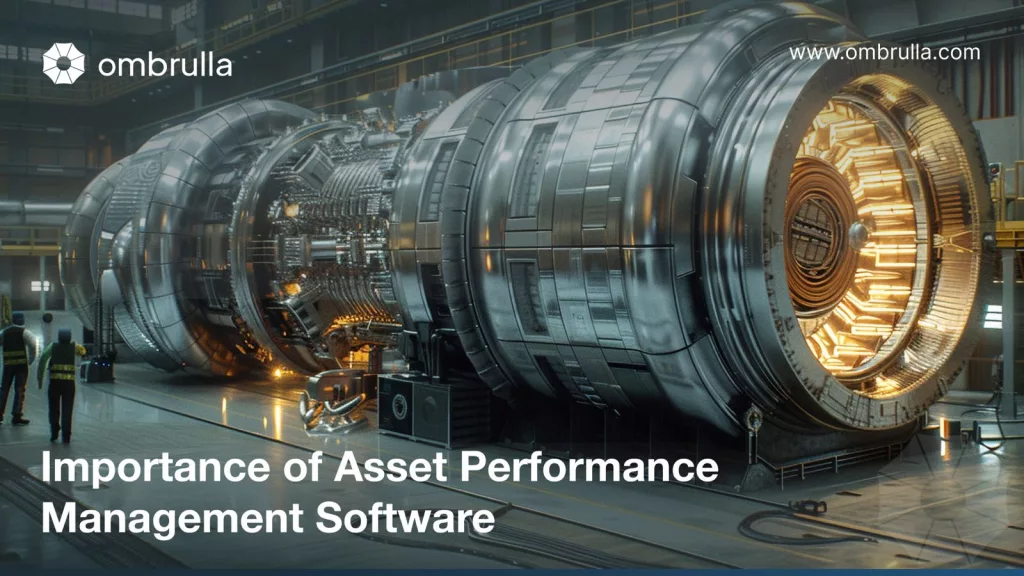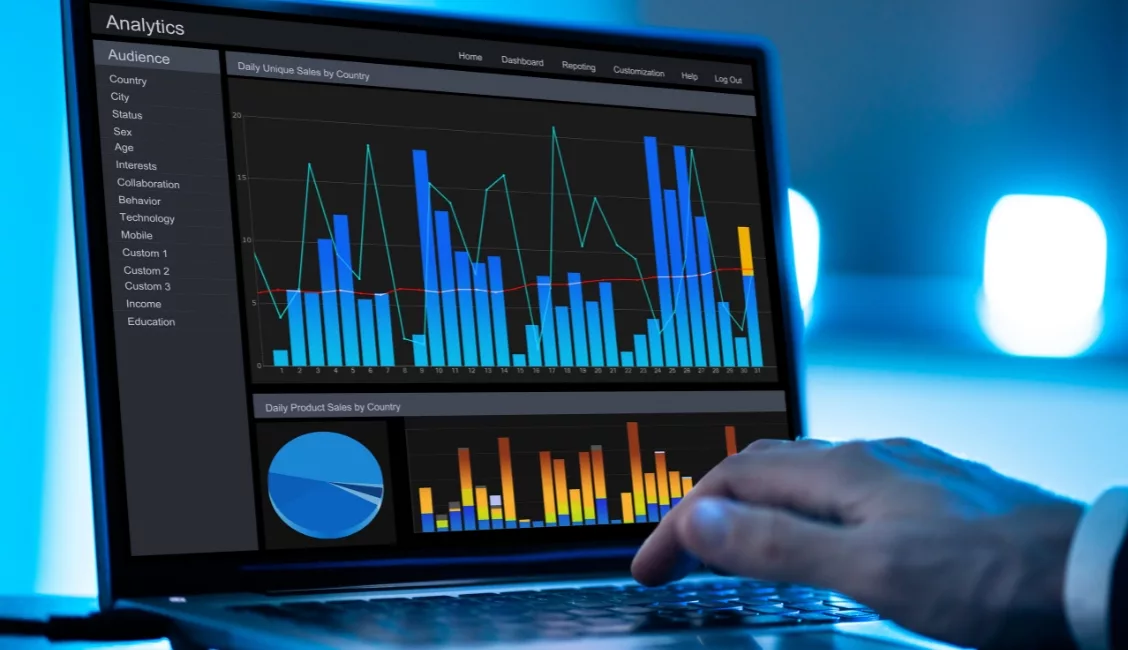
Imagine a manufacturing plant where a critical piece of machinery unexpectedly breaks down, halting production for several days. The maintenance team scrambles to diagnose the issue, only to discover that it could have been prevented with regular performance monitoring and timely interventions. The company incurs significant financial losses, misses delivery deadlines, and suffers reputational damage—all because of poor asset performance management.
Asset Performance Management integrates advanced asset tracking and predictive maintenance systems to monitor the health and performance of critical equipment in real-time. This proactive approach enables organizations to identify potential issues before they escalate, thereby minimizing downtime and costly repairs. By leveraging IoT asset management capabilities, Asset Performance Management software provides comprehensive insights into asset health across multiple sites and asset types, facilitating centralized control and streamlined operations.
Implementing asset performance management software enhances decision-making processes by providing actionable data-driven insights. Organizations can utilize these insights to optimize maintenance schedules and improve asset reliability. With Asset Performance Management software, businesses can align maintenance activities with actual asset needs, reducing unnecessary downtime and optimizing resource allocation.
Demonstrating the value of asset performance management is achieved through measurable outcomes and clear Key Performance Indicators (KPIs). By effectively utilizing Asset Performance Management software, organizations can enhance profitability through reduced maintenance costs, increased asset lifespan, and improved operational productivity.
The integration of asset health monitoring, equipment tracking and predictive maintenance systems not only enhances safety and regulatory compliance but also ensures that organizations remain competitive in a dynamic market environment.
As businesses navigate towards digital transformation, Asset Performance Management software emerges as a pivotal tool in unlocking sustainable growth and operational excellence.
Table of Contents
- The Importance of Asset Performance Management Software.
- What are the benefits of Asset Performance Management Software?
- Transform Downtime Disasters into Reliable Operations.
- Achieve Maximum Efficiency and Unmatched Excellence.
- Unlock Profitable Savings and Reduce Expenses.
- Make Data-Driven Decisions Instead of relying on Intuitions.
- Ensure Robust Compliance and Effective Risk Management.
- Experience Unparalleled Scalability Beyond Rigid Constraints.
- Improved and Immediate Return Of Investment within 2 Years.
- Conclusion
The Importance of Asset Performance Management Software
Asset Performance Management (APM) software plays a vital role in modern businesses by optimizing asset performance. It enables companies to monitor their assets in real time, allowing for proactive maintenance and minimizing downtime.
Asset Performance Management software:
- Optimizes Asset Performance: APM software ensures assets operate at peak performance levels, enhancing efficiency and profitability.
- Enables Proactive Maintenance: Real-time monitoring and predictive analytics help prevent issues, minimizing downtime and disruptions.
- Supports Data-Driven Decisions: Provides valuable insights into performance trends, aiding in informed maintenance and resource allocation.
- Ensures Regulatory Compliance: Helps assets meet industry standards, reducing risks and ensuring business continuity.
- Promotes Scalability: Optimizes asset utilization, allowing businesses to adapt and grow in dynamic industries.
- Extends Asset Lifespan: Identifies inefficiencies, helping to allocate resources effectively and plan for long-term growth.
- Maintains Competitive Edge: Maximizes asset value, improves operational efficiency, and supports a dynamic marketplace presence.
APM software is indispensable for modern businesses seeking to maximize asset value, improve operational efficiency, and maintain a competitive edge in a dynamic marketplace.
What are the benefits of Asset Performance Management Software?

Reduce your Asset Downtime with Asset Performance Management Software
Transform Downtime Disasters into Reliable Operations
1. Reduce unplanned downtime by up to 50%
Frequent equipment breakdowns disrupted operations, causing significant delays and losses. However, with asset performance management software, issues are predicted early, preventing unexpected failures.
As a result, downtime reduces significantly, allowing operations to run smoothly.
Additionally, predictive maintenance systems improve reliability, eliminating the constant struggle with repairs and ensuring equipment stays in optimal condition.
2. Extend asset lifespan by 20%
Equipment wore out quickly due to lack of insights, leading to frequent breakdowns and high costs.
However, IoT asset management monitors health continuously, providing valuable data for timely interventions.
This proactive approach of asset tracking extends the lifespan of assets significantly. Consequently, asset performance management maximizes longevity, reducing the frequency and cost of replacements, and ensuring more reliable operations.
3. Decrease failure rates with predictive maintenance
Failures were unexpected and costly, disrupting operations frequently and causing significant downtime.
However, Asset Performance Management Software and predictive maintenance systems foresee issues before they escalate, allowing timely interventions.
As a result, failures drop drastically, ensuring smoother and more reliable operations. Additionally, asset health monitoring keeps equipment running smoothly, eliminating the need for reactive and inefficient maintenance practices, and enhancing overall efficiency.

Maximize your Operational Efficiency with AI & IoT driven Asset Performance Management.
Achieve Maximum Efficiency and Unmatched Excellence
1. Optimize maintenance schedules
Maintenance was done on fixed intervals, often leading to unnecessary work and inefficiencies.
However, asset performance management software schedules maintenance based on real-time data, ensuring precise timing.
This optimizes maintenance timing, performing tasks only when truly needed. As a result, maintenance aligns with actual asset needs, reducing resource waste and significantly increasing operational efficiency.
2. Increase asset utilization by 10-15%
Before the implementation of asset tracking software, assets frequently sat idle due to inadequate monitoring and tracking capabilities. This led to significant underutilization of resources and inefficiencies within operations.
With the introduction of asset tracking software, there is now a robust system in place that ensures accurate monitoring and utilization of assets. This improvement enables operations to optimize asset usage more effectively, resulting in a noticeable increase of 10-15% in utilization rates.
Efficient tracking not only enhances resource allocation but also boosts overall productivity by ensuring that assets are actively engaged in contributing to operational goals.
3. Streamline work processes with real-time data
Before the implementation of real-time data from asset performance management, teams often encountered challenges due to reliance on outdated information. This resulted in inefficiencies that plagued daily operations, affecting overall productivity and decision-making processes.
However, with the adoption of real-time data capabilities, there has been a significant improvement. Now, decision-making processes are informed by up-to-the-minute insights, enabling teams to streamline workflows effectively.
These real-time insights not only enhance operational efficiency but also contribute to the reduction of inefficiencies previously experienced, thereby promoting smoother and more agile business operations overall.

Find out how APM can reduce high expenses of your Assets
Unlock Profitable Savings and Reduce Expenses
1. Lower maintenance costs by 10-20%
Before the adoption of Asset Performance Management Software, high maintenance costs strained budgets, impacting operational efficiency. Over-maintenance practices were common, leading to unnecessary expenses.
However, with the implementation of predictive maintenance systems, there has been a notable shift. These systems effectively reduce unnecessary repairs by predicting maintenance needs accurately.
As a result, costs have decreased significantly by 10-20%, aligning expenditures more closely with budgetary constraints. The shift towards data-driven insights has further optimized maintenance strategies, ensuring resources are allocated efficiently across operations.
2. Reduce spare parts inventory by 15%
Large inventories of spare parts tied up capital unnecessarily and cluttered storage spaces with excess parts. This practice was inefficient and strained operational resources.
However, with the introduction of asset tracking software, spare parts management has been optimized. Efficient tracking now ensures that inventory levels are maintained at optimal levels, reducing the need for excess parts by 15%.
This improvement not only streamlines operations but also enhances capital efficiency, allowing resources to be allocated more effectively across the organization.
3. Decrease energy consumption with efficient asset use
Inefficient use of assets often led to high energy bills, impacting operational costs significantly. This inefficiency resulted in unnecessary consumption and wastage of energy resources.
However, with the adoption of asset performance management, there has been a significant improvement. This system optimizes energy use effectively, ensuring that assets operate at their peak efficiency levels. As a result, energy consumption has decreased noticeably, contributing to cost savings and environmental sustainability efforts.
The shift towards more efficient operations has also minimized previous instances of energy waste, further enhancing the organization’s overall energy management strategies.

Make Remarkable Data-Driven Decisions with APM Software
Make Data-Driven Decisions Instead of relying on Intuitions
1. Leverage analytics for informed decisions
Decisions within the organization are frequently based on intuition and guesswork rather than on comprehensive data analysis. This approach often led to uncertainties and potential risks in strategic planning and operational execution.
However, with the integration of asset performance management Software, there has been a transformative shift. Analytics derived from these predictive maintenance systems now play a crucial role in guiding decision-making processes across the organization.
As a result, decisions are more informed, leveraging detailed insights and trends to enhance accuracy and effectiveness. This data-driven approach ensures that every decision is supported by robust analytics, empowering teams to make proactive and strategic choices that align with organizational goals and objectives.
2. Identify trends and anomalies early
Before the implementation of asset health monitoring systems, many issues within operations often went undetected until they reached critical stages, resulting in significant disruptions and costs.
With the introduction of asset health monitoring, however, there has been a significant improvement in the detection of issues at early stages. This proactive approach allows for timely intervention and mitigation of potential risks, thereby preventing larger and more costly problems from arising.
Previously challenging to identify, the asset tracking and monitoring systems now efficiently reveal important trends and patterns, enabling organizations to address emerging issues swiftly and effectively.
3. Improve forecasting accuracy
Before the adoption of data-driven insights, forecasts within organizations often proved inaccurate and lacked reliability, which hindered effective planning and decision-making.
However, with the implementation of accurate data-driven insights and equipment tracking, there has been a notable improvement in forecasting accuracy. This transformation enables organizations to make more informed and precise predictions about future trends and outcomes.
As a result, businesses can now rely on more reliable forecasts to anticipate market dynamics, optimize resource allocation, and strategically plan for growth. The shift towards data-driven forecasting not only enhances operational efficiency but also empowers organizations to stay agile and responsive in a competitive landscape.

Achieve Robust Compliance and Master Risk Management Today
Ensure Robust Compliance and Effective Risk Management
1. Ensure regulatory compliance
Before the adoption of asset performance management, organizations faced significant challenges in tracking and maintaining regulatory compliance, often resulting in overlooked regulations and potential legal risks.
However, with the implementation of asset performance management software, there has been a transformative improvement. These systems now play a pivotal role in ensuring adherence to regulatory requirements by providing comprehensive monitoring and reporting capabilities.
This proactive approach not only simplifies compliance management but also enhances the organization’s ability to maintain accurate and up-to-date compliance records. As a result, organizations can effectively navigate regulatory landscapes, mitigate compliance risks, and uphold their commitment to operational integrity and legal standards.
2. Reduce risk of asset-related incidents
Organizations often faced common and costly incidents related to their assets, which disrupted operations and incurred significant expenses. However, with the implementation of predictive maintenance systems, there has been a notable transformation.
These advanced systems now play a crucial role in mitigating risks associated with asset failures by identifying potential issues before they escalate into incidents. This proactive approach not only reduces the frequency of incidents but also enhances overall operational reliability.
Previously challenging to manage, proactive monitoring capabilities now enable organizations to prevent potential issues from developing, thereby safeguarding assets, optimizing resource utilization, and ensuring uninterrupted business continuity.
3. Enhance safety with proactive monitoring
Previously, safety concerns were addressed reactively due to insufficient monitoring capabilities within organizations. |
Now, asset tracking and asset health monitoring proactively identifies potential risks and hazards before they escalate. This proactive approach significantly enhances overall safety protocols and measures.
By implementing proactive measures, organizations can effectively mitigate risks and enhance safety standards across operations. As a result, safety is prioritized and maintained at higher levels, ensuring a secure environment for all stakeholders involved.

Embrace Unparalleled Scalability with Asset Performance Management Software
Experience Unparalleled Scalability Beyond Rigid Constraints
1. Adapt to changing business needs
Before the adoption of asset performance management, scaling operations was challenging and often a slow process.
With the implementation of this system, organizations now benefit from quick adaptability to changing business needs. This flexibility enables seamless adjustments that support sustainable growth and expansion.
Previously struggling to scale, the software now efficiently adjusts to evolving requirements and market dynamics, ensuring operational agility and continuity.
2. Integrate with existing systems
Before the adoption of asset performance management, organizations frequently encountered challenges when attempting to integrate new systems with existing infrastructure. These clashes often resulted in compatibility issues, which hindered operational efficiency.
However, with the implementation of asset performance management, there has been a significant improvement. This system now seamlessly integrates with existing systems, facilitating smoother operations and enhancing overall efficiency.
The streamlined integration process ensures that organizational resources are utilized more effectively and that processes are harmonized across different platforms. Previously common compatibility issues have been minimized, allowing for cohesive operations and improved interoperability between systems.
3. Scale across multiple sites and asset types
Managing multiple sites and diverse assets posed significant challenges before the adoption of IoT asset management.
Now, IoT asset management enables effortless scaling across various sites and asset types. This scalability simplifies management tasks, ensuring uniform oversight and streamlined operations across all assets.
Previously complicated by diverse asset types, management now benefits from standardized.

Unlock Immediate ROI and Transform Your Profits
Improved and Immediate Return Of Investment within 2 Years
1. Realize ROI within 1-2 years
Before the adoption of asset performance management, organizations often experienced slow and uncertain returns on investment.
However, with the implementation of asset performance management software, businesses can achieve quick returns within 1-2 years. This rapid ROI realization is facilitated by the system’s ability to optimize asset performance and reduce operational costs efficiently.
Previously, investments took considerable time to pay off, but now, organizations benefit from accelerated returns through improved asset management practices.
2. Increase overall profitability
Before integrating asset performance management, high operational costs frequently eroded profit margins for organizations.
After implementing efficient asset performance management software, profitability sees a significant boost. This improvement is driven by optimizing asset utilization and minimizing unnecessary expenditures.
As a result, overall profitability rises, reflecting enhanced financial performance and operational efficiency. Inefficient practices that previously impacted margins are replaced with streamlined processes that maximize profitability across the board.
3. Demonstrate value with clear KPIs
Before adopting asset performance management, demonstrating the value derived from asset investments was challenging due to unclear metrics.
However, with the implementation of clear Key Performance Indicators (KPIs), organizations can now effectively showcase the benefits of improved asset performance. These KPIs provide tangible evidence of enhanced operational efficiency, reduced downtime, and optimized resource utilization.
As a result, the value delivered by asset performance management becomes evident, enabling organizations to justify investments and make informed decisions based on measurable outcomes.
Conclusion
In conclusion, adopting a comprehensive asset management strategy yields substantial benefits across key business areas. From improved asset reliability and operational efficiency to significant cost reductions and enhanced data-driven decision-making, organizations stand to gain a competitive edge. By leveraging predictive maintenance, optimizing schedules, and harnessing analytics for informed decisions, businesses can reduce downtime, lower maintenance costs, and achieve faster ROI. Moreover, prioritizing compliance, risk management, scalability, and flexibility ensures adaptability and sustained growth. This holistic approach not only boosts profitability and efficiency but also strengthens organizational resilience in a dynamic marketplace. Embracing these strategies is pivotal for organizations aiming to thrive and innovate in the face of evolving challenges and opportunities.

Leave a Reply